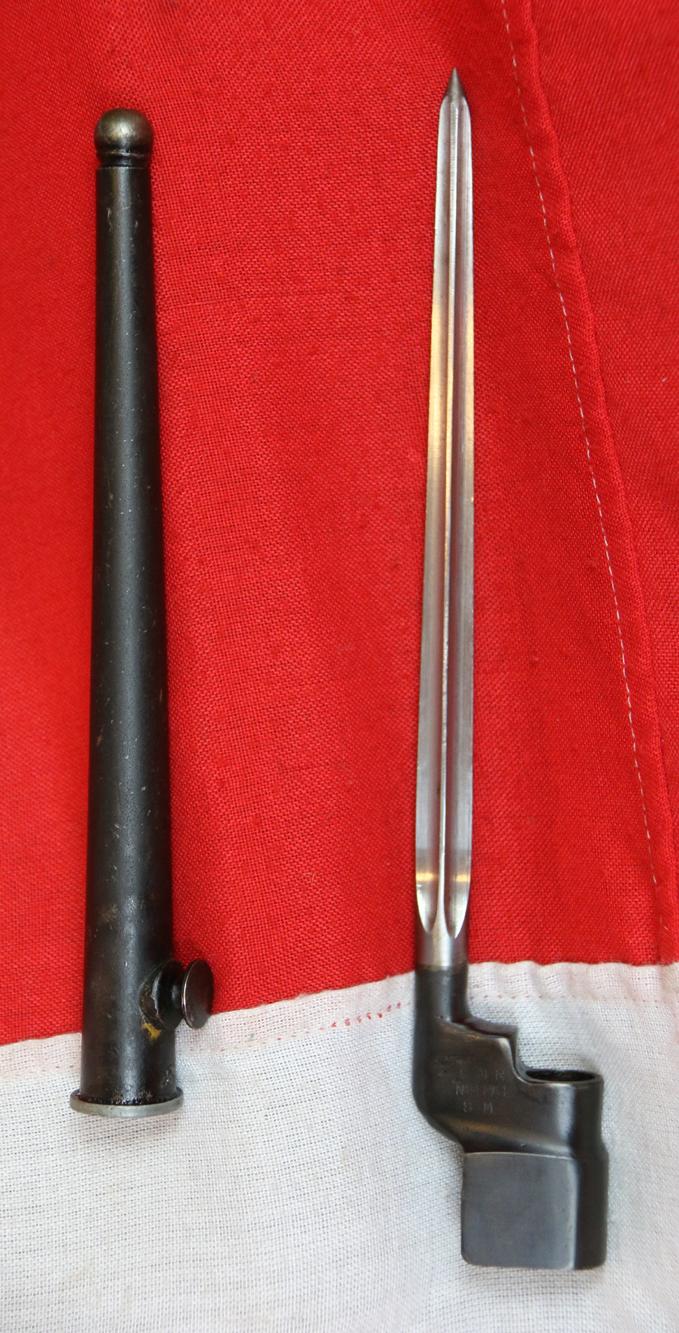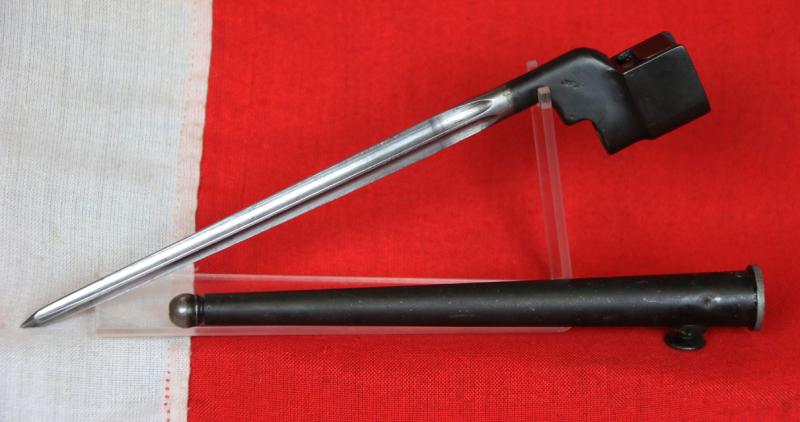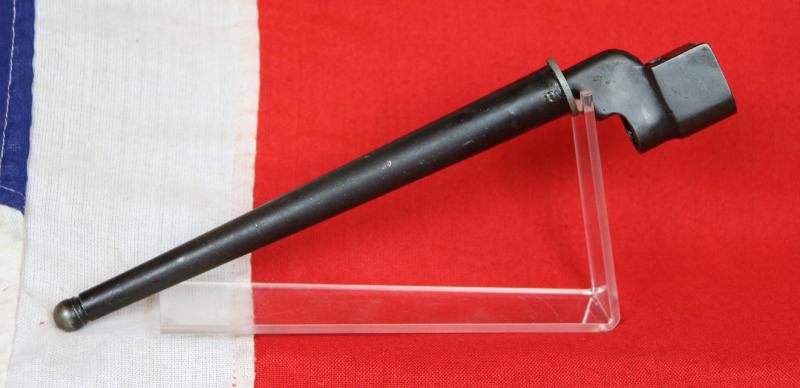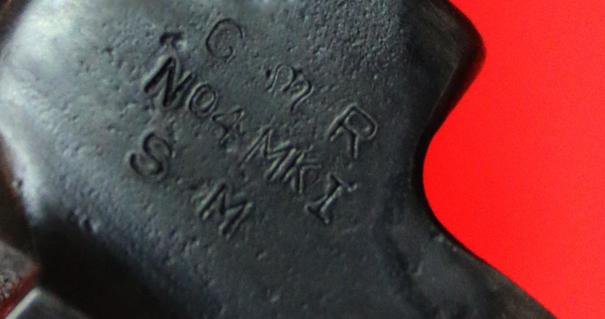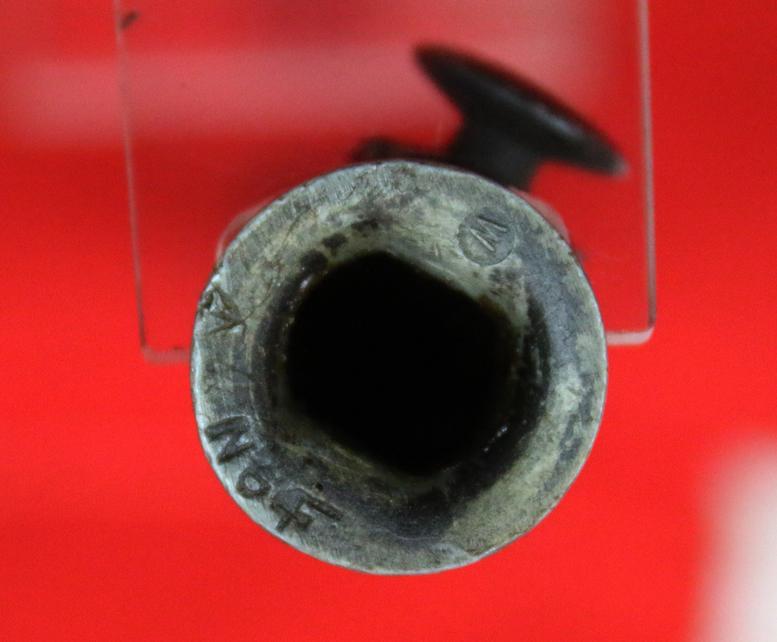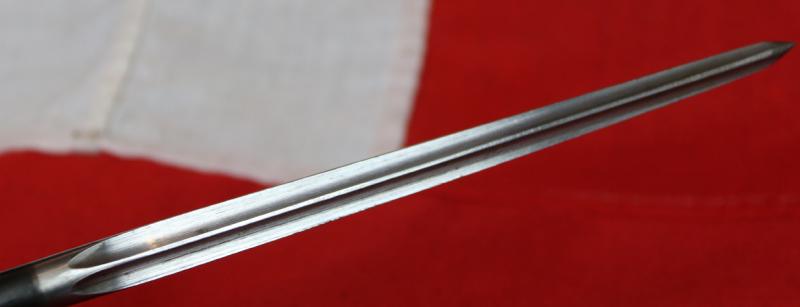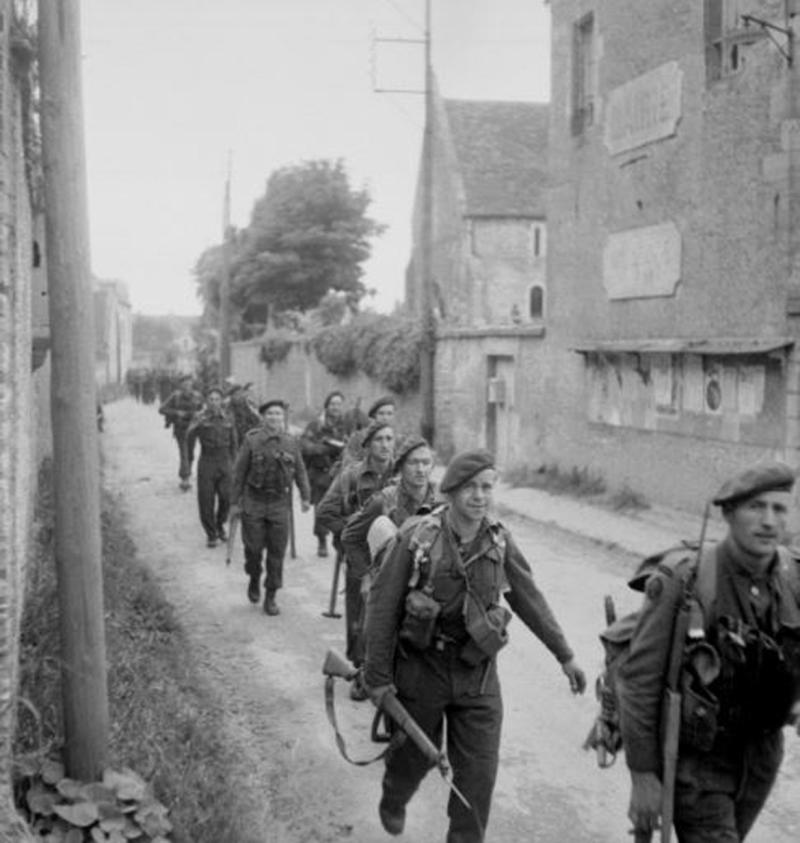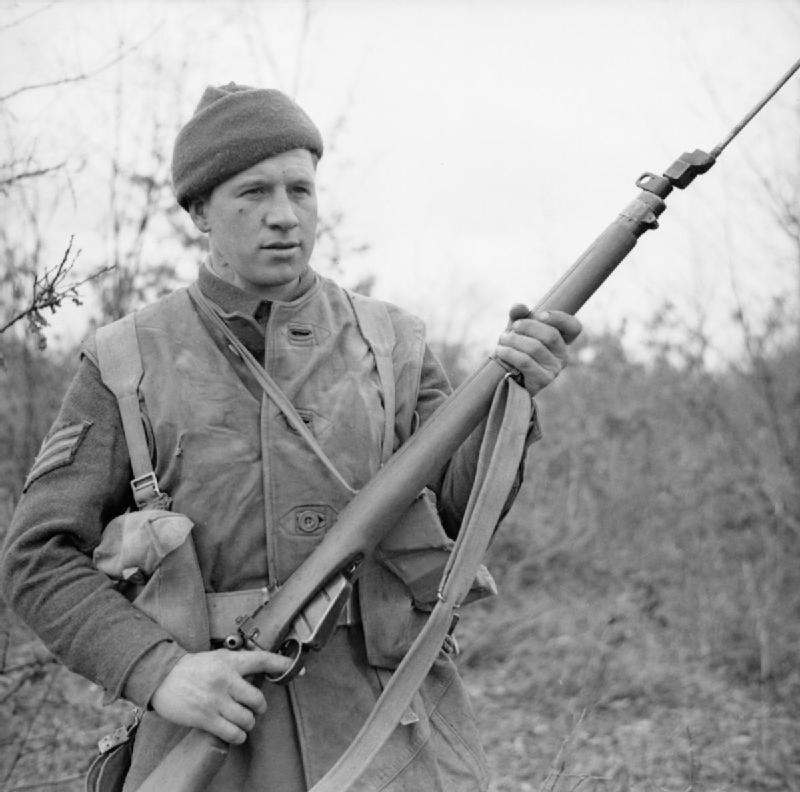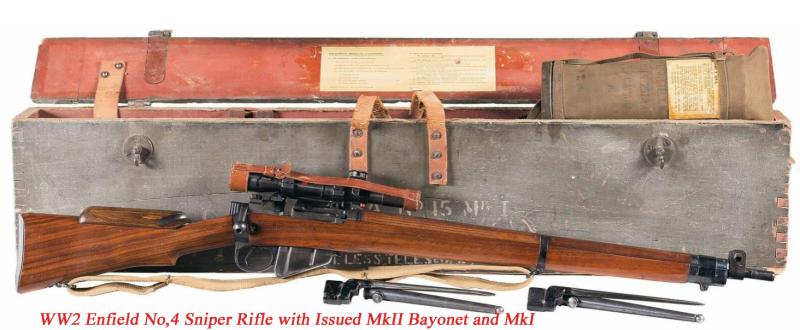Very Rare & The Most Collectable Bayonet of WW2. A WWII British Lee Enfield No 4 MK 1 Cruciform Spike Bayonet By ‘SM’ (Singer Manufacturing Co) With MK 1 Scabbard. The Earliest, & Briefly Issued Bayonet Of The No4 Rifle in WW2
The No. 4 Mk. I was the first beautifully made bayonet for the earliest Enfield No.4 rifle, with its distinctive cruciform blade. The bayonet and socket were one solid forging.
Only thousands of the MKI bayonet were made, before it was simplified in 1942 as the new MKII bayonet version of the MKI, in order to enable the saving of production costs. Over 3,000,000 were made of the new MKII bayonet for the Enfield No. 4 rifle, up to one hundred times more than were made of the MKI. Production initially occurred for the MKI during the latter half of 1941 and into the early months of 1942. The only maker was the Singer Manufacturing Co. (the famous sewing machine people), at their Clydebank, Scotland plant. One influence in the selection of Singer was that Scotland was felt to be safer from German bombers than England. No. 4 Mk. I markings were reminiscent of how Pattern 1907 bayonets were marked, with the royal cypher, type, and maker.
Socket: "G (Crown) R" over No 4 Mk I" over "S M"
Sheffield Steel Products of Sheffield, Yorkshire. Sheffield Steel Products produced approximately Mk. 1 scabbards. Stamped N64 = Sheffield Steel Products
One of the most interesting points about the Mark l bayonet was the likelihood that near all were used in the desert campaign against Rommel or at the D Day Normandy invasions, by such as the commandos, due to their date of manufacture, but the later MKlls may, or may not have have been used as they were later made and many made post war .
It is further relatively certain they were the issued bayonet used in the ill fated Dieppe Raid in 1942 which meant almost all those MKI bayonets issued were lost due to capture by the occupying German forces.
As an aside, for decades since the war it was assumed the Dieppe Raid was a rehearsal for the Normandy landings, and in many respects a terrible and tragic failure involving tens of thousands of men, mostly Canadian heroes, lost or captured, including many ships lost by the Royal Navy.
Information has now been recently released to reveal that the raid was in fact an incredibly super top secret planned diversion in order to capture the highly secret German cypher machine in a safe within one particular building in the town. Organised by an ultra top-secret section of the SAS and SIS, even the men chosen by the British Secret Service to take part were not even told of the raids purpose until minutes after they arrived to actually carry out the operation. All of the sacrifices made by thousands of men were to ensure the secrecy that the ultra top secret purpose of the plan, that it was actually a diversion, and not a rehearsal, that may, and in fact did, sacrifice thousands of men, in order to save hundreds of thousands, or even millions of lives, in the later planned Normandy invasion. This plans true aim was never revealed, until very recently. And many in command of the war in Britain, were, as such, blamed by the families of the lost, and felt the unending guilt of the terrible losses. Regretably , in the cold hard reality and truth of war, just like in medical surgery, sometimes a limb must be sacrificed and lost in order to save the body. And the unenviable thankless task of making such decisions, can often create a massive tactical victory, yet from those viewing from outside the circle of knowledge, it appears to be a tragic mistake.
Lord Louis Mountbatten, as the chief of Combined Operations, and Ian Fleming, a future James Bond author and naval intelligence officer, were involved in the allegedly disastrous Dieppe Raid (Operation Jubilee) in 1942, a so-called failed Allied amphibious attack on the German-occupied port of Dieppe. Even today you can find blame still being apportioned to Mountbatten and his aide, Ian Fleming, for the raid’s failure. It is a mark of the stature of such men that in their lifetimes they never revealed the truth, and lived with scorn and admonition, and even unto death still do by many.
Code: 25682

